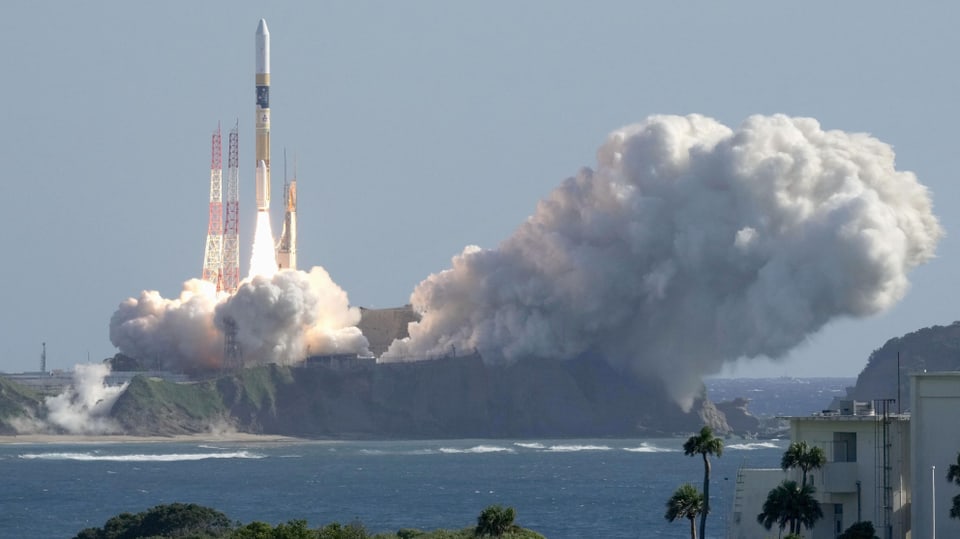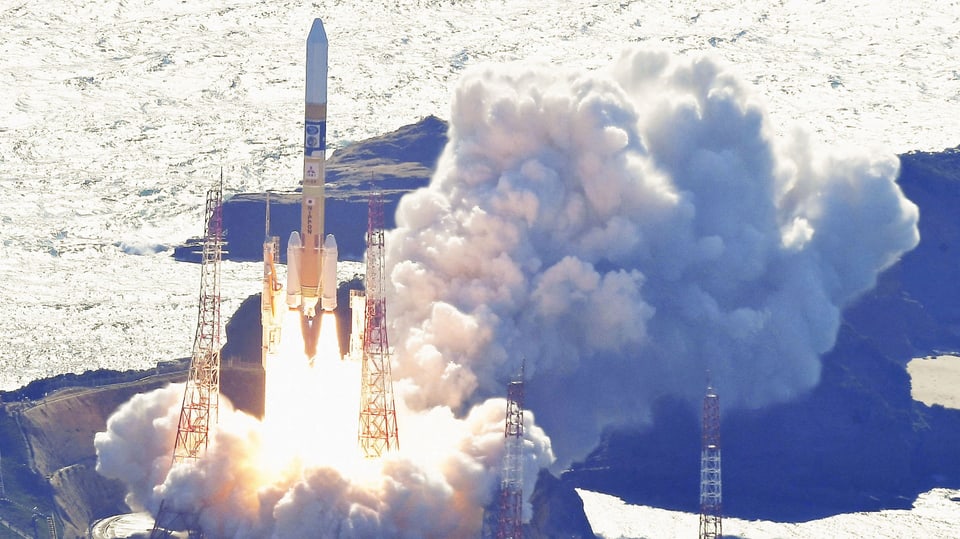- Japan has sent a small probe to the moon.
- A Japanese H2A carrier rocket successfully took off from Japan’s Tanegashima spaceport in the south-west of the island kingdom in clear weather.
- Japan would be the fifth country after the Soviet Union, the USA, China and India to land on the moon.
In addition to the SLIM moon lander, there was also an X-ray telescope called XRISM on board, which is intended to explore the origins of the universe. XRISM successfully separated from the launch vehicle about 14 minutes and nine seconds and SLIM about 47 minutes and 33 seconds after launch, the Japanese space agency Jaxa announced.
Legend:
This makes Japan the fifth nation on the list of successful moon missions.
Reuters/Kyodo
The rocket launch had previously been postponed several times due to poor weather conditions. Only two weeks ago, India managed a soft moon landing, shortly after a Russian space probe had crashed on the moon.
In three to four months in lunar orbit
The lunar lander developed by Jaxa is intended to test technologies for future pinpoint landings on the lunar surface. SLIM is scheduled to enter lunar orbit about three to four months after launch and attempt to reach the surface of the moon in four to six months.
The data collected by Japan on the moon will be used as part of the US-led Artemis project. The aim of this project is to bring people back to the moon by 2025 and to advance the exploration of the moon. The wider goal is human exploration of Mars.
Cooperation with Nasa and Esa
Japan is also working with the US space agency Nasa and the European Space Agency ESA on the XRISM mission (X-Ray Imaging and Spectroscopy Mission). XRISM is designed to make observations of the hot gas-plasma wind blowing through galaxies in the Universe. It is hoped that this will provide information about the composition and development of celestial objects.

Legend:
The Japanese project is part of the US-led Artemis project, which aims to put man back on the moon.
Reuters/Kyodo
It was the first launch of a larger Japan-developed launch vehicle since a next-generation H3 rocket failed in March this year. The successor to the reliable H2 launch vehicle was Japan’s first new development of a large launch vehicle in around 30 years.
Japan intends to establish itself firmly in the lucrative and increasingly competitive global satellite launch business. The H3 rocket program is also seen as important to Japan’s participation in space development, including the US-led Artemis program.
